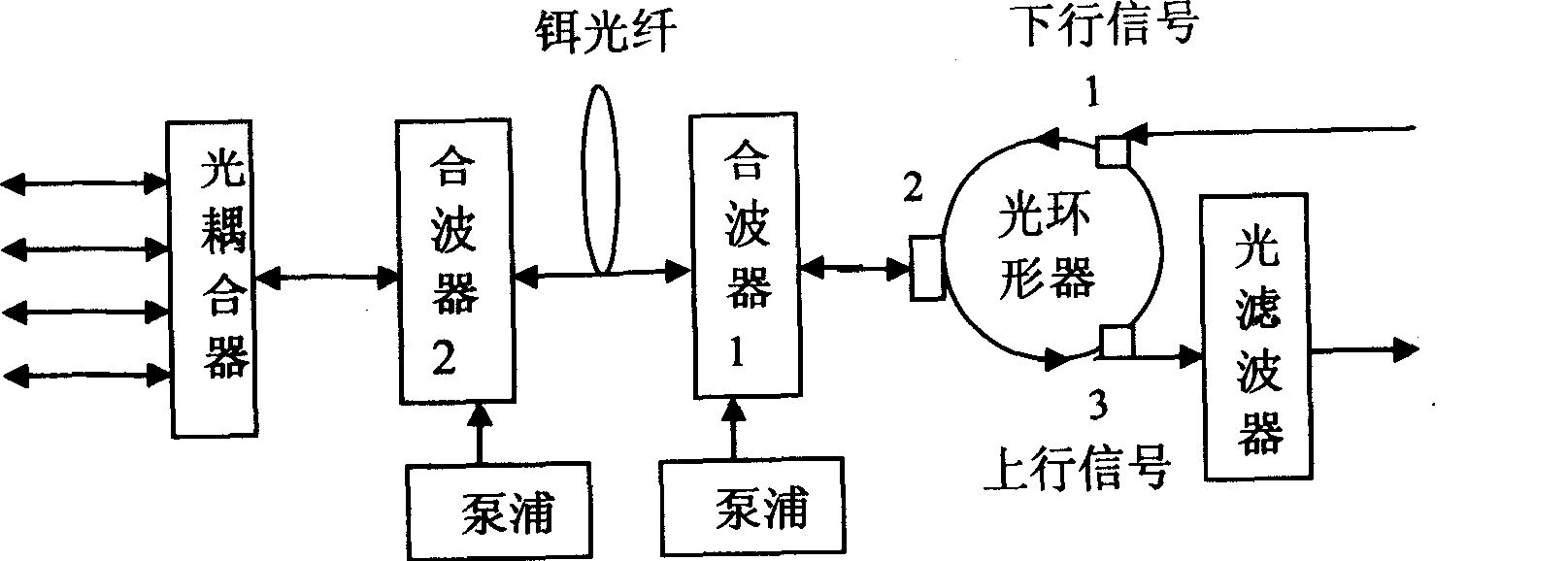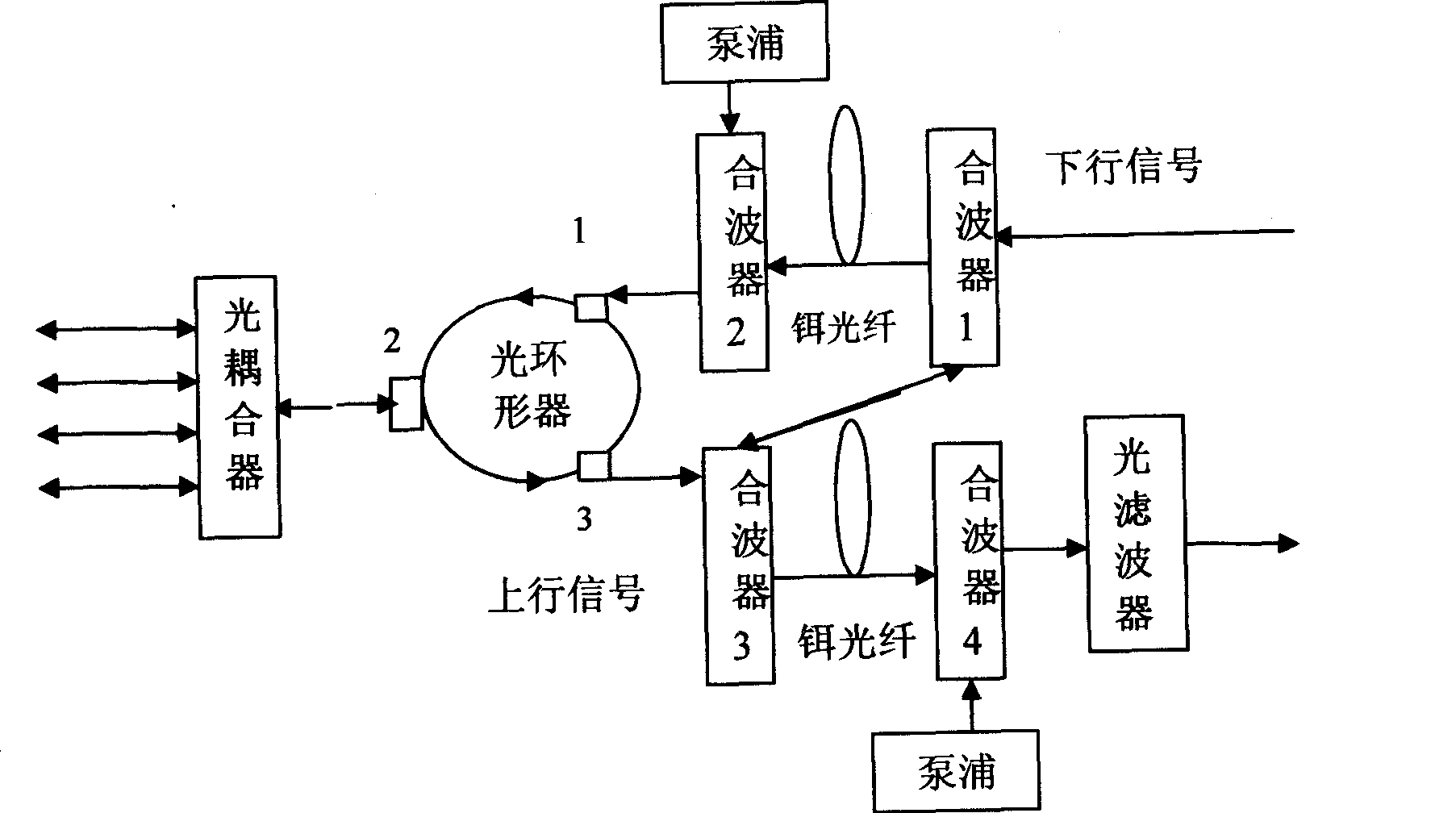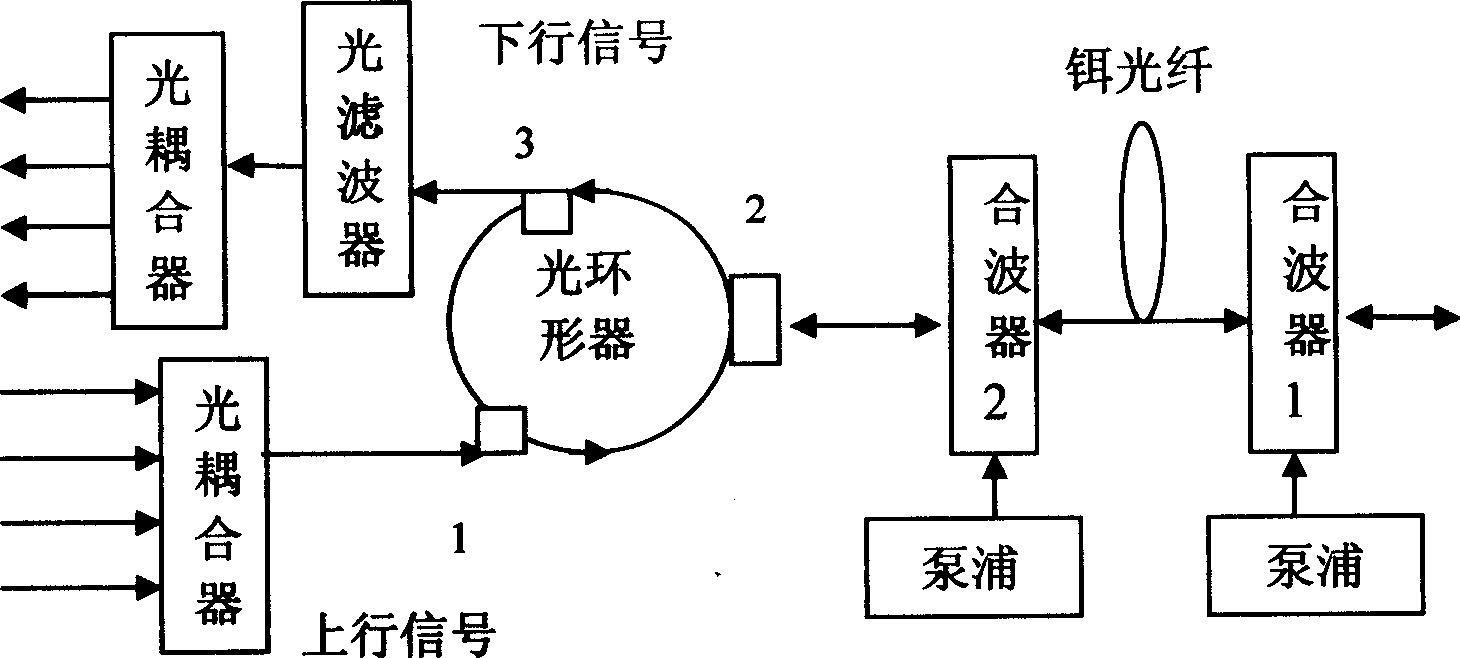Multiport input/output single-fiber bidirectional erbium-doped fiber amplifier
An erbium-doped fiber and amplifier technology, which is applied in the field of multi-port input and output single-fiber bidirectional erbium-doped fiber amplifiers, can solve the problems of incompatibility, high cost, crosstalk interference, etc., and achieves reduction of signal amplification cost, system cost, transmission The effect of simple system structure
- Summary
- Abstract
- Description
- Claims
- Application Information
AI Technical Summary
Problems solved by technology
Method used
Image
Examples
Embodiment 1
[0019] Fig. 1 is a block diagram of a four-port input-output single-fiber bidirectional erbium-doped fiber amplifier model 1 suitable for a central office. It can be seen from Figure 1 that the multi-port input-output dual-fiber bidirectional erbium-doped fiber amplifier is mainly composed of optical coupler, optical filter, optical circulator, pump light source, pump signal multiplexer, erbium-doped fiber and transmission fiber. The downlink signal from the optical transmitter of the central office is input from port 1 of the optical circulator, output from port 2, coupled with the pump light by the multiplexer 1 into the erbium-doped fiber for amplification, and output to the optical coupler through the multiplexer 2 The device is divided into four downlink optical signals. The four upstream optical signals are combined by the optical coupler into one signal and the pump light enters the erbium-doped fiber through the multiplexer 2 for amplification, and then is output by th...
Embodiment 2
[0021] Fig. 2 is a block diagram of a four-port input-output single-fiber bidirectional erbium-doped fiber amplifier model 2 suitable for a central office. Different from pattern 1, the uplink optical signal and downlink optical signal are amplified in two independent erbium-doped optical fibers. The downlink signal from the central office optical transmitter first enters the erbium-doped fiber for amplification, and then is input by port 1 of the optical circulator, and output from port 2 to the optical coupler to be divided into four downlink optical signals; the four uplink optical signals are first transmitted by the optical The coupler is combined into one optical signal output to the port 2 of the optical circulator, output from the port 3 of the optical circulator, and then enters the erbium-doped optical fiber to be amplified and then output to the optical receiver of the central office.
Embodiment 3
[0023] Fig. 3 is a block diagram of a four-port input-output single-fiber bidirectional erbium-doped fiber amplifier model 1 suitable for an optical network unit. It can be seen from Figure 3 that the downlink optical signal first enters the erbium-doped optical fiber for amplification, and then outputs to port 2 of the optical circulator, then outputs from port 3 of the optical circulator, and then is filtered by an optical filter and divided into four downlink optical signals by the optical coupler. The signal is output to the optical receiving module at the user end. The uplink optical signals from the four user-side optical transmitters are firstly combined by the optical coupler into one optical signal, enter the erbium-doped fiber for amplification, and then output to the port 1 of the optical circulator, output from the port 2 of the optical circulator, and then enter the doped fiber Erbium fiber amplification.
PUM
 Login to View More
Login to View More Abstract
Description
Claims
Application Information
 Login to View More
Login to View More - R&D
- Intellectual Property
- Life Sciences
- Materials
- Tech Scout
- Unparalleled Data Quality
- Higher Quality Content
- 60% Fewer Hallucinations
Browse by: Latest US Patents, China's latest patents, Technical Efficacy Thesaurus, Application Domain, Technology Topic, Popular Technical Reports.
© 2025 PatSnap. All rights reserved.Legal|Privacy policy|Modern Slavery Act Transparency Statement|Sitemap|About US| Contact US: help@patsnap.com



